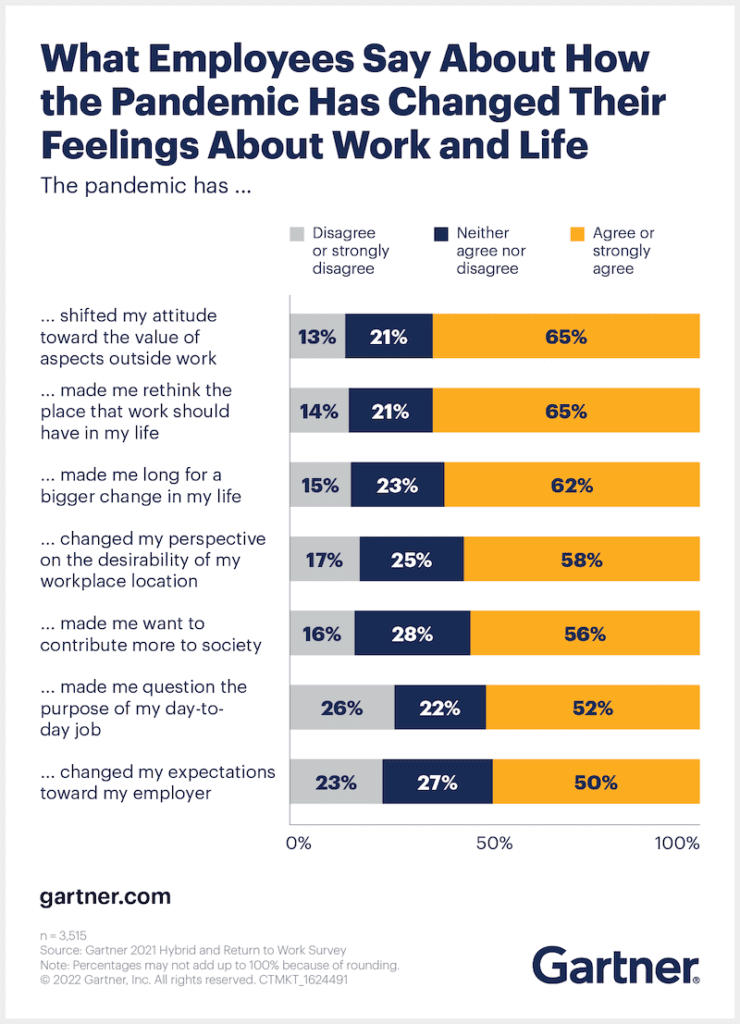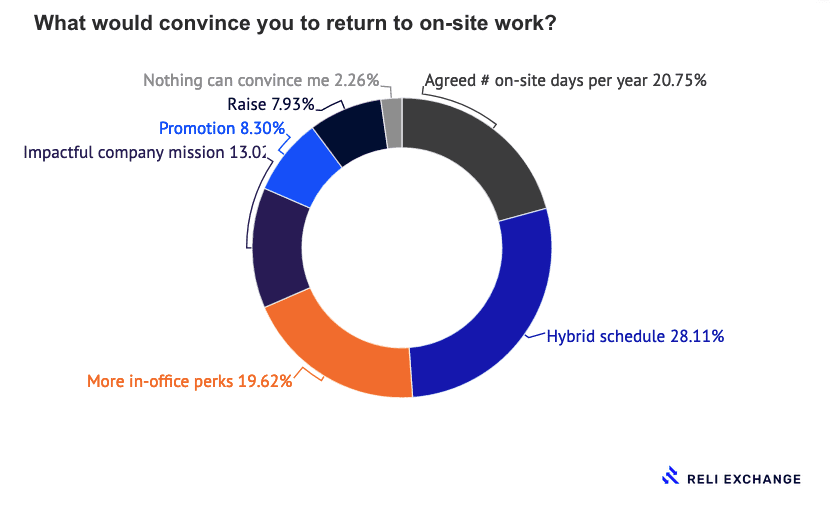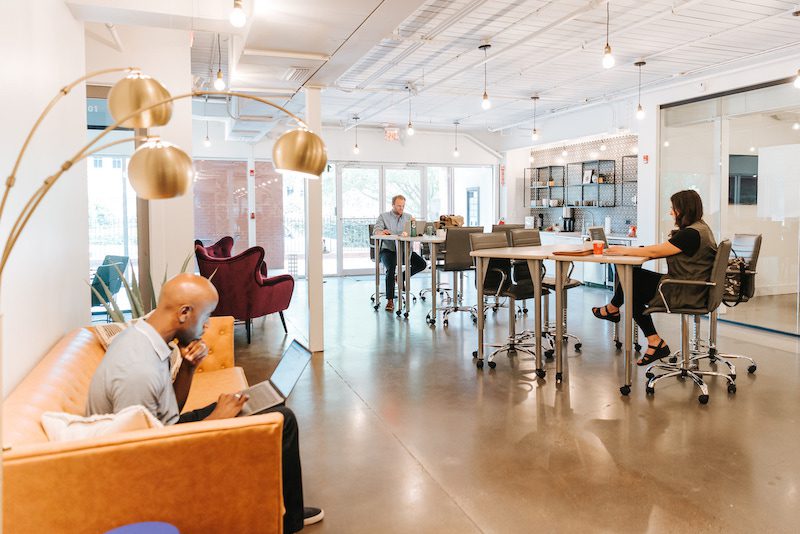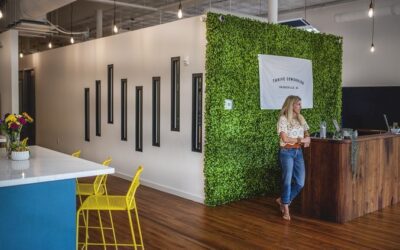Too busy running your enterprise to track down the latest business stats and trend reports? No problem. We’ve collected the high-level insights from leading consulting firms and business publications to keep you on top of what’s happening with the American workforce as we head into 2023.
Nearly three years after COVID-19 upended our lives — especially the way we work — it’s still not clear if things will ever return to their pre-pandemic “normal.” In fact, it’s looking increasingly likely that they won’t.
“COVID changed everything,” says Chief Revenue Officer at THRIVE | Coworking, Chris Smith. “It put a bright spotlight on everything that was not sustainable for the American workforce. And now things are coming into much sharper focus about what employees and entrepreneurs need, want and deserve.”
As the sun rises on a new year, we take a look at the state of the workplace: the ideas that dominated work life in 2022 and the trends that will continue in 2023.
The Great Resignation Lives On
At the beginning of last year, consulting firm Gartner advised employers that workers were still asking themselves the big questions raised by the pandemic: Questions like, “What makes me happy and whole? What truly satisfies me? Where have I given away too much of myself for little return?”

Famously, many workers quit after reflecting on how their current jobs just weren’t cutting it for them anymore. A year later, workers are still feeling restless and keeping an eye on the exits. Fully half the office-based workforce changed jobs since the pandemic began, and a huge majority (90 percent!) of those people say they would consider taking a new job in 2023. That’s according to a JLL survey of more than 3,000 office workers across 13 major cities around the world.
A Deloitte survey reported that about 44 percent of Gen Z and Millennial workers cited burnout as the leading reason for leaving their old job, and good work/life balance as the No. 1 reason for taking a new one.
“The era of the employment contract, when a worker provided services purely in exchange for monetary compensation, is over,” Gartner says.
Will a Coming Recession Reverse the Trend?
With some economists whispering (and others shouting) about a coming recession in 2023, businesses are looking at their balance sheets to see where they can cut back. Expect a continued shift away from full-time employment as businesses look to part-timers and independent contractors to fill some roles.
The next-biggest budget item, after labor, is office space. The Instant Group predicted that corporate headquarters will shrink by 40 percent in the coming years, and noted that demand for flexible workspace in the U.S. is up by 58 percent over pre-pandemic levels.

“We’re seeing incredible demand for hybrid workspace, from solopreneurs all the way up to Fortune 500 companies,” says Smith. “It hits a sweet spot especially for larger enterprises that want to give their employees a flex schedule and skip a long commute, but still be able to meet in person with their teams, in a professional setting, and in the neighborhoods where they live.”
Still, fear of recession is not enough to keep workers in their jobs. Job unhappiness is at an all-time high, according to Gallup’s annual State of the Global Workplace Report. The Great Resignation shows no sign of abating.
The Return-to-Office Tug-of-War Rages
Pandemic restrictions revealed that many, if not most, of the office-based jobs in the United States can be performed remotely from pretty much anywhere with an internet connection, without any noticeable effect on productivity.
- Nearly two-thirds of Americans currently have the option to work remotely at least some of the time
- A trend toward hybrid work is seen in every economic sector, even some blue-collar jobs
- Many WFH employees are even more productive than their in-office peers
- 81 percent of companies plan to keep their workforces virtual, remote or hybrid
Nonetheless, many bosses are eager to bring workers back. Some have even resorted to luring them with after-work wine socials and perks like rock-climbing walls. But they’re being met with fierce resistance. Of 1,000 hybrid or remote workers surveyed by Reli Exchange, one in four say they’d refuse a return-to-the-office mandate, and many of them are willing to lose their jobs over it.

There is an upside for employers, though. According to a survey by ZipRecruiter, an employment search site, jobseekers said on average they would take a 14 percent pay cut for a remote position. It also turns out remote workers are less likely to take a personal or sick day than if they were in an office five days a week.
ZipRecruiter chief economist, Julia Pollak, told the New York Times: “Many, many companies in recent months have insisted that people come back to the office five days a week, only to reverse that mandate within about a week after hearing that they’d lose their best and brightest.”
The downside to WFH for employees? When Microsoft surveyed 30,000 workers around the world, it found more than half felt lonelier than they did before.
So, many businesses have settled on hybrid work as a kind of compromise — a few days working at home, a few days in the office. But in some ways the home/office hybrid is the worst of both worlds, argue Charlie Warzel and Anne Helen Peterson in a new book, Out of Office: The Big Problem and Bigger Promise of Working from Home. When only a fraction of workers are coming into the office on any given day, it’s all the hassle of commuting to work with little of the benefit of spontaneous interactions with colleagues that makes in-person work fruitful.
2023 WORK TRENDS
| OUT | IN |
| Presenteeism | Work from anywhere |
| Location-centered | People-centered |
| Toxic office culture | Mentorship and community |
| Corporate HQs | Coworking spaces |
| Overtime | Four-day weeks |
| More money | More meaning |
The Office of the Future Will be Flexible, Meaningful and Equitable
“The fundamental problem is people haven’t done that difficult but necessary work of figuring out what the office is going to be for,” said Anne Helen Peterson on an Ezra Klein podcast. She says the real problem is that office culture is broken: Indeed, research from MIT found that a toxic workplace culture was 10 times more important than compensation in predicting staff turnover.
Younger workers are tired of the toxicity and inequities that dominated pre-pandemic office life. They want real change. (Women in particular saw work-from-home as a reprieve from the unpaid and unappreciated emotional labor they’re disproportionately assigned at the office — like ordering cupcakes for a colleague’s birthday).
Deloitte’s 2022 survey found Gen Zs and Millennials want to work for companies that don’t just pay them well, but also treat them fairly and prioritize issues such as climate change. Millennials, in fact, are three times more likely to stay in a job they feel is meaningful, according to research from Great Place to Work cited in Fortune.
Peterson and others argue that now is the time to rethink not only where but also how we work. Recent research points the way to what workers want in the workplace of the future, and what smart companies are doing to recruit and retain top talent — especially the youngest members of the workforce.

It’s Not About the Smoothie Bar: Gen Z Wants Different Kinds of Perks
Gen Z isn’t as swayed by money as generations before it, according to research from Snapchat. Instead, they want empathetic managers, mentorship and deeper connections with their colleagues.
When they do come into an office, workers now have higher expectations for what the experience should be. The successful workspaces of 2023 will be those that can offer great amenities, experiences and a sense of community.
“We recognize that Gen Zers are looking for different things than other generations, and we are trying to adjust for that,” one industry exec told the New York Times. In order to keep their younger talent, the company instituted a four-day workweek.
Other firms are seeing a need to go beyond dot-com-era perks like foosball tables and smoothie bars, and to really address Gen Z’s desire for personal development. Some are offering free therapy sessions, access to financial advisors, career coaching, and fertility benefits.
But these amenities have to be well-thought-out. The New York Times found that post-pandemic office bribes like a climbing wall made workers feel more distracted. Anecdotally, many workers insist they’re more productive at home, and several well-designed research studies back up that idea (including this one, which found that tech engineers given the option to work from home were happier, less likely to quit, and wrote 8 percent more lines of code than their in-office peers). But it’s not a one-size-fits-all solution: Many workers struggle to focus at home, especially those who share their living space with roommates or young children.
These observations have led some companies to rethink their office setups altogether. Companies like Hootsuite have already redesigned their offices to designate some work spaces as more overtly social (think: comfy couches) while others are meant for quiet, focused work (think: soundproof booths).

The Office of the Future … Might Not Even Be an Office
Depending on the industry, companies are thinking beyond the office — and even beyond the home office — due to the simple fact that employees are sick of commuting to work. Three in four workers say a conveniently located office is a must-have for their next job.
Some firms recognize that work can happen outside a traditional office, and they are offering employees memberships at private clubs like Soho House and providing them with rented homes in the Hamptons, where employees can bond with each other and schmooze clients. Many allow their teams to work from coworking spaces in their home cities or while on the road: Healthcare company GoodRx encourages employees who travel frequently to use services like Deskpass to find a place to work, in whichever city they find themselves that day.
“Being around people they work with is great, but [being] around other … human beings that they don’t work with is also good. Just being able to be around people is life-giving for some people,” the company’s director of workplace experience told Deskpass.
Maybe the office of the future isn’t just one place, it’s a series of spaces with different functions: a home office for head-down focused work; suburban coworking spaces located closer to where employees live, where teams can work together once or twice a week; and larger regional centers for corporate team-building.
“It’s unfortunate it took a pandemic to bring about the changes we’re seeing,” says THRIVE’s Smith, “but what could be better than everyone working in a convenient, walkable neighborhood, in a more purposeful and collaborative way? It’s a win-win for employers, employees and society in general.”




